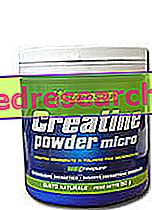
Located between the distal portion of the femur (superiorly) and the proximal portion of the tibia (inferiorly), the knee is one of the main joints of the human body .
In fact, together with the hip, it allows the movement of the legs and absorbs most of the weight exercised by the trunk.
When the health of one or both knees is severely impaired (due, for example, to osteoarthritis or rheumatoid arthritis ), the conditions exist for implanting a prosthesis .
The knee prostheses are, for all intents and purposes, replicas of the original joints and require, for their arrangement, a surgery of about an hour and a half .
Although medical engineering has made great strides (guaranteeing biocompatible materials, minimal invasiveness, etc.) and surgeons are now competent in the matter, the operation of implanting a knee prosthesis remains, even today, a procedure that would be better avoided or at least delay.
Alternative treatments for knee prosthesis or, if you prefer, the methods to postpone the installation consist of:
- Lose weight .
The extra kilos weigh on the knees: according to experts, in fact, for every 10 pounds (about 4.5 kg), the overload on the knees is equivalent to 60 pounds (about 27.2 kg).
- Practice the right physical activity .
Movement and exercise are beneficial for the joints, especially in the presence of a form of arthritis. It is no coincidence that in the morning, after waking up, the arthrosic individual feels particularly ill.
- Rely on a physiotherapist experienced in knee problems .
There are muscle stretching and muscle strengthening exercises that reduce pain and load on the knees.
The task of the physiotherapist is to indicate muscle stretching and muscle strengthening exercises, which serve to reduce pain and reduce the load on the knees.
- Hyaluronic acid injections .
Hyaluronic acid is a substance normally produced by our body with the aim of hydrating and protecting the tissues, including those present in the joints. With the onset of osteoarthritis (or other forms of arthritis) the levels of hyaluronic acid produced are sometimes even drastically reduced.
Hyaluronic acid injections serve to reduce pain and improve joint mobility; they must be repeated several times, after a few weeks.
- Corticosteroid injections .
Corticosteroids are very powerful anti-inflammatories, which, however, if taken for long periods and at the wrong dose, can lead to serious side effects.
- Platelet-rich plasma injections.
Blood platelets appear to promote pain reduction and tissue and blood vessel repair.
- Stem cell injections .
It seems that the stem cells are able to promote the regeneration of cartilage tissue in the knee.
- Undergo an osteotomy .
It is a surgical practice that involves remodeling of deteriorated joint bones, in order to better redistribute the body weight on the joint.



